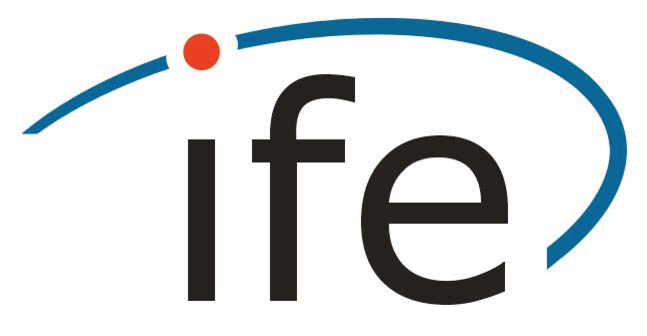Prof. Dr.-Ing. habil. Jürgen Müller

 © INTERGEO 2019 / HINTE Messe- und Ausstellungs-GmbH
© INTERGEO 2019 / HINTE Messe- und Ausstellungs-GmbH
30167 Hannover

 © INTERGEO 2019 / HINTE Messe- und Ausstellungs-GmbH
© INTERGEO 2019 / HINTE Messe- und Ausstellungs-GmbH
- Geschäftsführender Leiter des Instituts für Erdmessung
- Sprecher SFB 1464 TerraQ
-
Weitere Funktionen in der Universität
- Zulassungs- und Prüfungsausschuss Geodäsie und Geoinformatik - Vorsitz
- Zulassungs- und Prüfungsausschuss Navigation und Umweltrobotik - Vorsitz
- Studienkommission Geodäsie und Geoinformatik - Stellv. Vorsitz
- Strukturkommission Geodäsie und Geoinformatik - Vertr. d. Professorinnen/Professoren
- QUEST Leibniz Forschungsschule - Vorstand
- HITec – Hannover Institute of Technology - Vorstand
- Exzellenzcluster QuantumFrontiers – Vorstand
- Forschungszentrum FZ:GEO - Vorstand
- Lebenslauf
-
Mitgliedschaften, Ämter und Arbeitsgruppen
- Mitglied der International Association of Geodesy (IAG)
- Präsident des IAG Projektes Novel Sensors and Quantum Technology for Geodesy
- Mitglied der DGK (Ausschuss Geodäsie der Bayerischen Akademie der Wissenschaften) sowie in der Abteilung „Erdmessung“, seit 2015 deren Vorsitzender
- Ordentliches Mitglied in der Klasse für Ingenieurwissenschaften der Braunschweigischen Wissenschaftlichen Gesellschaft, von 1.1.2012 bis 31.12.2017 deren Vorsitzender
- Mitglied der Leibniz-Sozietät der Wissenschaften zu Berlin e.V.
- IAG-Vertreter im Nationalen Komitee für Geodäsie und Geophysik (NKGG), seit Dezember 2011 NKGG-Vorsitzender, und Vertreter Deutschlands in der IAG und in der IUGG
- Mitglied im DVW-Vorstand (seit 1.1.2011) sowie im DVW AK 7 „Experimentelle, Angewandte und Theoretische Geodäsie“, Organisation der Geodätischen Woche
- Mitglied im Vorstand der Leibniz Forschungsschule QUEST (Quantum Engineering and Space-Time Research) sowie des Forschungsbaus HITec an der Leibniz Universität Hannover
- Mitglied im Vorstand des Exzellenzclusters QuantumFrontiers an der Leibniz Universität Hannover
- Mitglied im Vorstand des Forschungszentrums FZ:GEO an der Leibniz Universität Hannover
- Mitglied im Europäischen GRACE Science Team und weiterer Verbundprojekte zur Untersuchung von Schwerefeldsatellitenmissionen
- Federführender Schriftleiter, zfv – Zeitschrift für Geodäsie, Geoinformation und Landmanagement
-
Preise und Auszeichnungen
1993 Award of „Bund der Freunde der TU München“ for the best PhD. thesis in the faculty of civil and geodetic engineering between 1991 and 1993
-
Wichtige Publikationen
Douch, K., Schubert, C., Wu, H., Müller, J., Pereira Dos Santos, F. (2017): Simulation-based evaluation of a cold atom interferometry gradiometer concept for gravity field recovery, Advances in Space Research
DOI: 10.1016/j.asr.2017.12.005
Freier, C., Hauth, M., Schkolnik, V., Leykauf, B., Schilling, M., Wziontek, H., Scherneck, H.-G., Müller, J., Peters, A. (2016): Mobile quantum gravity sensor with unprecedented stability, Journal of Physics: Conference Series, 8th Symposium on Frequency Standards and Metrology 2015 12–16 October 2015, Potsdam, Germany
DOI: 10.1088/1742-6596/723/1/012050
arXiv: 1512.05660
Hofmann, F. and Müller, J. (2018): Relativistic tests with lunar laser ranging, Classical and Quantum Gravity, vol. 35, p. 035015
DOI: 10.1088/1361-6382/aa8f7a
Müller, J., Murphy, T., Schreiber, U., Shelus, P., Torre, J., Williams, J., Boggs, D., Bouquillon, S. Bourgoin, F. Hofmann (2019): Lunar Laser Ranging – A Tool for General Relativity, Lunar Geophysics and Earth Science, Journal of Geodesy, Vol. 93, p. 2195-2210
DOI: 10.1007/s00190-019-01296-0
Müller, J., Biskupek, L. (2007): Variations of the gravitational constant from lunar laser ranging data, Classical and Quantum Gravity, vol. 24, p.4533-4538
DOI: 10.1088/0264-9381/24/17/017
Müller, J., Biskupek, L., Hofmann, F., Mai, E. (2014): Lunar Laser Ranging and Relativity, in: Frontiers in Relativistic Celestial Mechanics – Volume 2: Applications and Experiments, ed. S. Kopeikin, De Gruyter, p. 103-156
Müller, J., Soffel, M., Klioner, S. (2008): Geodesy and Relativity, Journal of Geodesy, Vol. 82, No. 3, 133-145, DOI: 10.1007/s00190-007-0168-7
Müller, J. (2018): Height and time systems in geodesy and the impact of clock networks, ISSI Workshop on Spacetime Metrology, Clocks and Relativistic Geodesy, Bern, Schweiz, 19.-23.3.2018
Steffen, H., Gitlein, O., Denker, H., Müller, J., Timmen, L.: (2009): Present rate of uplift in Fennoscandia from GRACE and absolute gravimetry, Tectonophysics 474, S. 69-77 Weitere Informationen
DOI: 10.1016/j.tecto.2009.01.012
Torge, W., Müller, J. (2012): Geodesy, 4th edition, Walter de Gruyter, Berlin/Boston 2012
ISBN: 978-3-11-025000-8
Wu, H., Müller, J., Lämmerzahl, C. (2019): Clock networks for height system unification: a simulation study, Geophysical Journal International, 216(3):1594-1607
DOI: 10.1093/gji/ggy508




